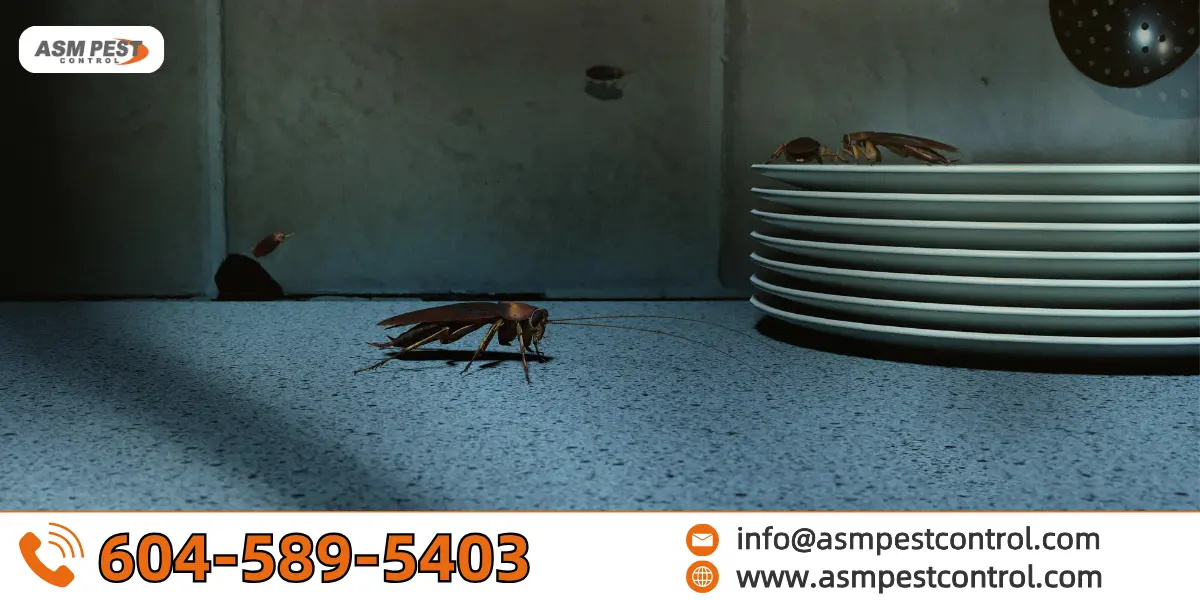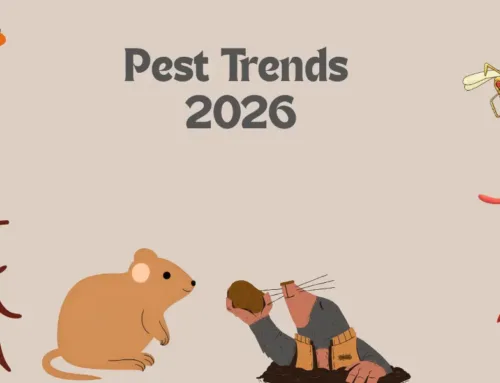Have you ever seen a cockroach scurrying across your kitchen floor? If so, there is most likely a nest nearby. They are clever and sneaky, able to hide in the tiniest crack, a dark corner, and nestle in a spot that we least expect them to be. The first key to effective control and prevention is to learn where do cockroaches hide.
Cockroaches look forward to environments that provide warmth, moisture, and ready access to food. Once they reach your home, they will multiply within no time. No matter how little or how much the infestation problem may take, identifying their preferred hiding place can be the key to reclaiming what is rightfully yours.
Why Cockroaches Hide
Cockroaches are nocturnal creatures and prefer not to come out in the presence of humans. Their flat bodies allow them to maneuver into the smallest cracks. They like dark, undisturbed areas with frequent access to moisture and crumbs. What is more difficult to notice is the tendency to hide in communities. When you see one, there are likely to be many more situated in the same place.
Today, we are going to have a closer look at the places where cockroaches hide behind the walls of your house and ways to detect some of these hidden colonies before they are able to become a critical issue.
1. Inside and Behind Kitchen Appliances
The kitchen is one of the most likely locations where cockroach control Burnaby can be found. An ideal environment is provided by warmth, food residue, and moisture. Large-size appliances like refrigerators, ovens, dishwashers, and microwaves provide an excellent place of shelter, particularly behind and below the models. Spills, grease, and crumbs can pile up without anyone realizing it, thus inviting roaches to hide in the narrowest of corners.
Even coffee makers and toasters, which are also on the countertop, are not an exception. Small pieces of food may end up in hard-to-reach places, making food these to feed these pests. Keeping areas under and behind appliances clean, and vacuuming off and sealing cracks, are other ways to reduce the possibility of a roach infestation considerably.
2. Cracks, Crevices, and Structural Gaps
The small holes in walls, floorboards, and ceiling become the ideal cockroach hiding holes. They (the insects) adore baseboards, crown molding, or tiny openings anywhere near plumbing or electrical wiring. They prefer tight, closed places that protect them against discovery.
Cockroaches will take advantage of your old infrastructure or any cracks you have in your house. Blocking any of the areas where roaches may enter through a wall or part of a wall, such as around vents and baseboard, and wherever the pipes may penetrate the wall, is a paramount procedure in controlling roaches. These secret entrances can be closed by reinforced foam or caulking with silicone.
3. Cabinets and Pantry Spaces
Darkness, humidity, and food particles make cabinets an appealing hiding spot for cockroaches. Roaches may be found under sinks, in pantry corners, or deep in lower cabinets. Dry goods such as grains, cereals, and pet food can attract pests if not stored properly.
Use airtight containers for food storage and routinely clean your cabinets to minimize cockroach control Abbotsford activity. Regularly removing expired food items and checking for droppings or egg casings (oothecae) can help you catch early signs of a pest problem.
4. Bathrooms and Plumbing Fixtures
Because cockroaches thrive in moist environments, bathrooms are prime territory. They’re often found under sinks, behind toilets, in drains, and within the voids of bathroom cabinets. Leaky pipes or faucets give them the moisture they need to survive.
Routine bathroom cleaning, checking for leaks, and ensuring proper ventilation can reduce the chances of cockroach activity. Installing drain covers and using dehumidifiers can also discourage them from settling in.
5. Electronics and Home Office Equipment
It might be surprising, but cockroaches are frequently discovered inside electronics. Warmth generated by devices like computers, game consoles, routers, and televisions can attract them. Small crumbs from snacking at your desk can fall between keyboard keys or under hardware, drawing in pests.
Keeping electronics dust-free and away from food sources is essential. Use compressed air to clean keyboards and avoid eating in work areas. Roaches can cause serious damage to electronics by chewing wires and leaving behind corrosive waste.
6. Furniture and Decor
Sofas, chairs, and other cushioned furniture can offer roaches shelter, particularly if food crumbs are lodged within. They may also nest behind picture frames, wall hangings, and other decorations. These less-visible areas are ideal for egg laying and congregation.
Vacuum your furniture regularly and inspect behind wall decorations to eliminate hidden roach populations. Be cautious when bringing secondhand furniture into your home it can carry cockroach eggs or even live insects.
7. Garbage, Recycling, and Clutter
Cardboard boxes, piles of newspaper, and garbage bins are cockroach magnets. These materials provide both hiding places and, often, food residue. Roaches especially love cluttered areas that go undisturbed for long periods.
Maintain a clean environment by promptly disposing of trash and recycling. Don’t allow stacks of paper or cardboard to accumulate, especially in damp areas like basements or garages. Empty bins often and clean storage areas routinely to make your home less inviting to pests.
FAQs
- How can I tell if cockroaches are hiding in my home?
Common signs include small droppings that resemble coffee grounds, smear marks along walls, shed skins, egg casings, and a distinct musty odor. You may also see roaches scurrying when you turn on the lights at night. - Do cockroaches only come out at night?
Yes, cockroaches are nocturnal and tend to be most active in the dark. If you see them during the day, it may indicate a significant infestation that has forced them out of hiding due to overcrowding. - What attracts cockroaches to my home?
They are drawn to food, moisture, and shelter. Dirty dishes, leaky pipes, exposed food, and clutter create the ideal environment for cockroach colonies to thrive. - Can cockroaches live inside walls?
Absolutely. They often enter through small cracks and gaps in walls and ceilings and can remain hidden there for long periods, especially if the space is warm and close to a food or water source. - What’s the best way to prevent cockroach infestations?
Good sanitation is key. Clean thoroughly, seal entry points, fix leaks, and avoid leaving food out. Consider professional pest control for serious infestations or persistent problems.
Final Thoughts
Knowing where do cockroaches hide is the foundation of effective pest control. From kitchen appliances and drains to furniture and forgotten corners, cockroaches will exploit any opportunity to settle in. With vigilance, cleanliness, and timely action, you can keep your home free from these invasive pests.
Prevention starts with awareness. Don’t wait until you see a roach crawling across your counter. Act now by sealing off potential hiding places, reducing moisture, and eliminating food sources. If the infestation becomes overwhelming, professional pest control experts, ASM Pest Control, can help restore your home to a pest-free state.






